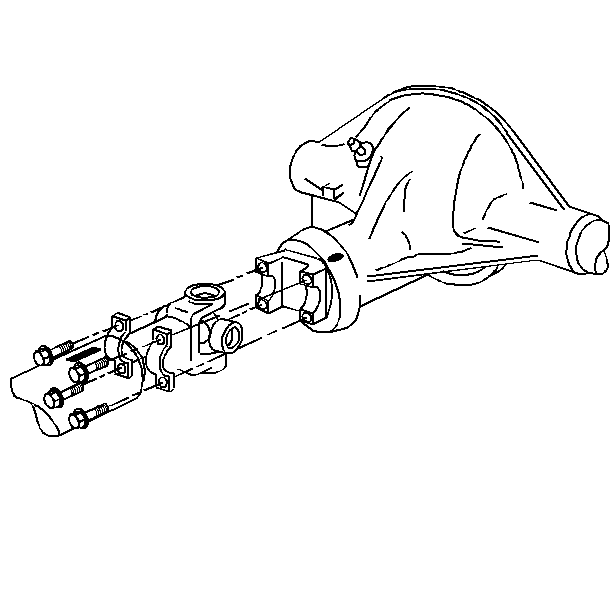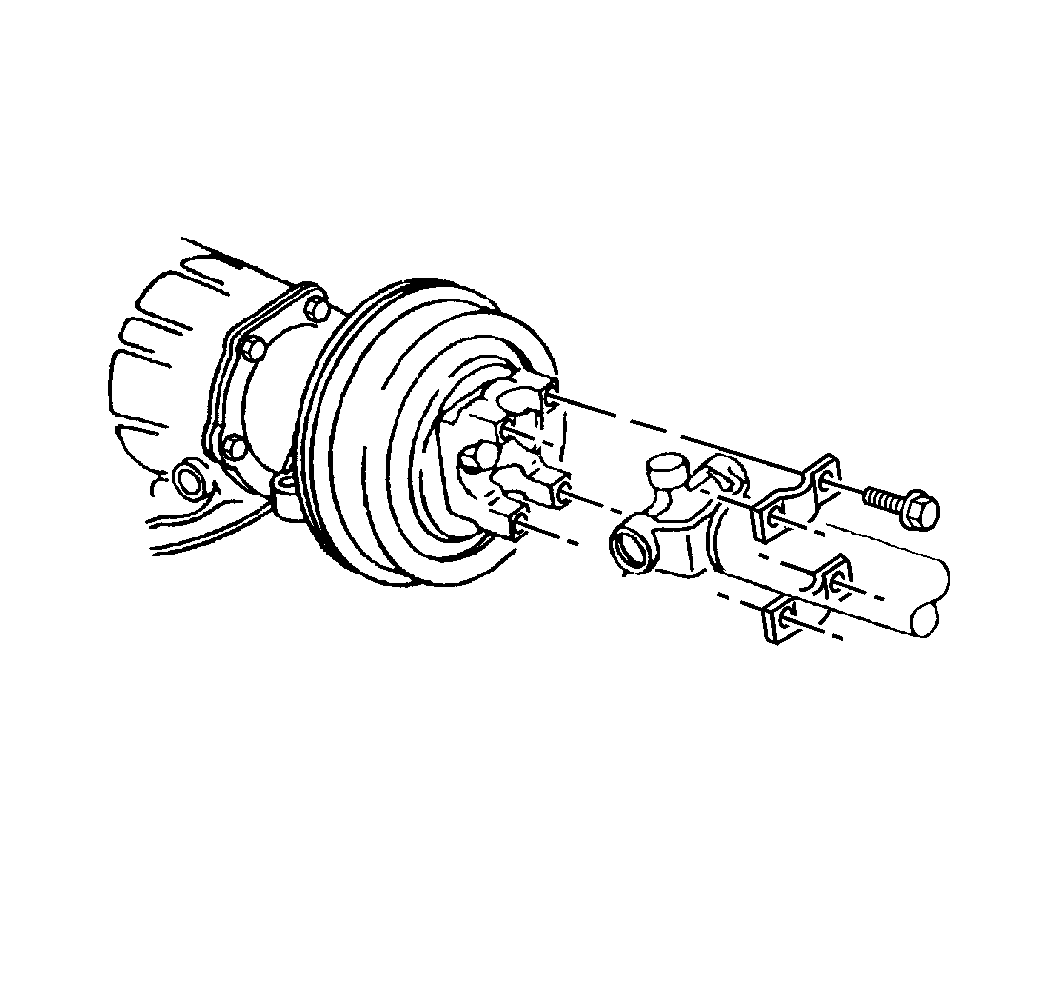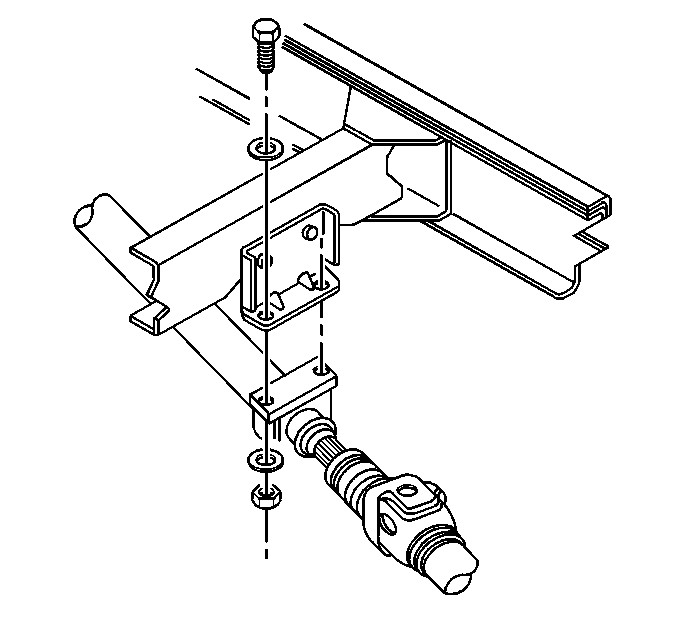Removal Procedure
- Raise the vehicle and support with safety stands. Refer to Lifting and Jacking the Vehicle in General Information.
- Remove the bolts at the pinion flange.
- Remove the retainers at the pinion flange.
- Loosen the cap retainer.
- Remove the rear propeller shaft.
- Remove the bolts at the yoke.
- Remove the retainers at the yoke.
- Remove the nuts from the front propeller shaft center bearing support attaching bolts.
- Remove the bolts and washers.
- Remove the front propeller shaft with the center bearing support from the vehicle.
- Clean all parts with an approved solvent.
- Inspect the outer diameter of the transmission yoke for burrs.
- Inspect for proper installation and uniform seating of the bearing cups.
- Inspect for twisted slip yoke splines or possibly the wrong universal joint.

Important: You must observe and accurately reference mark the positions of all driveline components relative to the propeller shaft and axles prior to disassembly. These components include the propeller shafts, drive axles, pinion flanges, and output shafts. All components must be reassembled in the exact relationship to each other as they were when removed. In addition you must follow published specifications and torque values as well as any measurements made prior to disassembly. Reference mark the rear propeller shaft to the pinion flange and to the front propeller shaft, then reference mark the front shaft to the yoke at the transmission.
Important: Do not pound on the original propeller shaft yoke ears. The plastic injection joints may fracture. Never pry or place any tool between a yoke and a universal joint. Tape the bearing cups onto the yoke and universal joints in order to prevent loss of the needle bearings. Slide the propeller shaft forward in order to disengage the rear universal joint from the pinion flange. Then slide the shaft rearward off the front propeller shaft splines.


Installation Procedure
- Install the bolts, washers, and nuts at the center bearing support to the crossmember.
- Lining up the reference marks, install the front propeller shaft up against the yoke.
- Install the retainers and bolts.
- Install the rear propeller shaft, lining up the reference marks.
- Set the seal in place and secure the cap retainer onto the rear shaft.
- Install the retainers.
- Install the bolts.
- Remove the safety stands and lower the vehicle.

Notice: Use the correct fastener in the correct location. Replacement fasteners must be the correct part number for that application. Fasteners requiring replacement or fasteners requiring the use of thread locking compound or sealant are identified in the service procedure. Do not use paints, lubricants, or corrosion inhibitors on fasteners or fastener joint surfaces unless specified. These coatings affect fastener torque and joint clamping force and may damage the fastener. Use the correct tightening sequence and specifications when installing fasteners in order to avoid damage to parts and systems.
Tighten
Tighten the center bearing support bolts to 53 N·m (39 lb ft).

Notice: Use the correct fastener in the correct location. Replacement fasteners must be the correct part number for that application. Fasteners requiring replacement or fasteners requiring the use of thread locking compound or sealant are identified in the service procedure. Do not use paints, lubricants, or corrosion inhibitors on fasteners or fastener joint surfaces unless specified. These coatings affect fastener torque and joint clamping force and may damage the fastener. Use the correct tightening sequence and specifications when installing fasteners in order to avoid damage to parts and systems.
Tighten
| • | Tighten the bolts (at the axle end) to 20 N·m (15 lb ft) (without the transmission mounted drum parking brake). |
| • | Tighten the bolts (at the axle end) to 28 N·m (21 lb ft) (with the transmission mounted drum parking brake). |

| • | Slide the front end of the shaft onto the splines of the front shaft. |
| • | Slide the front end of the shaft far enough forward in order to allow the rear universal joint to engage the pinion flange. |
Tighten
| • | Tighten the bolts (at the axle end) to 20 N·m (15 lb ft) (without the transmission mounted drum parking brake). |
| • | Tighten the bolts (at the axle end) to 44 N·m (33 lb ft) (with the transmission mounted drum parking brake). |
